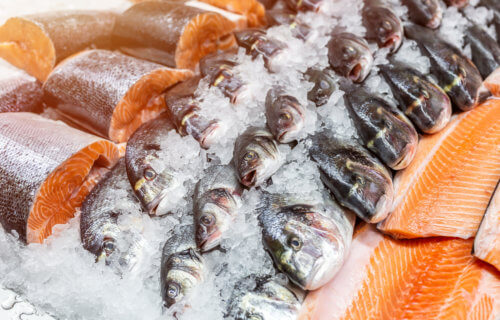BURLINGTON, Vt. — The coronavirus pandemic has created a fishy situation for the U.S. seafood industry, according to a new study from the University of Vermont. Researchers say American fishmongers may go out of business soon if more government aid doesn’t arrive.
In comparison to 2019, monthly fresh seafood exports have dropped by 43 percent this year. Similarly, monthly imports have declined by up to 37 percent. Even fish-catching rates have seen steady declines, with some months this year showing a full 40 percent drop.
Collectively, the first six months of 2020 show seafood exports are down by 20 percent and imports are down six percent in comparison to 2019. Unfortunately, further losses may be unavoidable due to ongoing COVID-19 restrictions.
“Seafood has been hit harder than many other industries because many fisheries rely heavily on restaurant buyers, which dried up when the necessary health protocols kicked in,” says lead study author Easton White in a university release. “Restaurants represent about 65 percent of U.S. seafood spending, normally.”
Does the government overlook the fish industry?
During normal years, the U.S. seafood industry employs over one million workers and generates over $4 billion in international exports. However, as lockdowns began in China in January 2020, American import demand started to fall off a cliff. By March, web searches for U.S. seafood restaurants had dropped by 50 percent and foot traffic at U.S. fish markets decreased by 30 percent.
On top of all that, financial aid for fisheries hasn’t been easy to come by. This is mainly due to the fact that, for fisheries, a pandemic is not classified as a valid reason for financial aid under current laws. The CARES Act, passed in late March of this year, did however allocate $300 million for the seafood sector.
There has been one silver lining for the seafood industry. Google searches for seafood delivery increased by 460 percent between March and April. Still, researchers say that won’t be enough to save many fisheries.
“Seafood is a seasonal business,” White says. “If you have a March to June season, and can’t get funds until next year, you might have to quit. Support from policymakers will decide which producers can survive.”
Where does the seafood industry need the most help?
Study authors say regions where fisheries make up a large portion of the economy need help first. Examples include Alaska, Maine, and Louisiana.
“Foreign markets play an important role in the U.S. seafood sector, but dependence on exports leaves portions of the sector vulnerable to these global shocks,” adds co-author Jessica Gephart of American University. “Diversifying the sector by building local networks and consumer education campaigns can help build resilience to future shocks.”
Usually, it would have taken months or even years to compile this kind of data, but the research team knew they had to asses the pandemic’s impact on fisheries faster than that. Identifying areas in need of financial aid quickly is essential for ensuring minimal business closures.
“The data is collected daily or weekly, but it’s often handwritten in a fisher’s logbook.” White explains. “The info needs to be processed and turned into a database and verified before researchers and government leaders get the big picture.”
The team gathered every possible source of rough data on the pandemic and its effect on the seafood industry. Those sources include NOAA fishery reports, federal customs data, anonymous commercial web location data, and news and trend (closures, outbreaks, restrictions) databases put together solely by UVM students.
How fisheries are getting creative with sales
As is the case across various industries right now, seafood producers are getting creative as they try to stay afloat. Community fishery programs, like Local Catch, help fisheries sell seafood to individual consumers that usually would have been sold to restaurants or markets.
While this is a definite positive, study authors caution initiatives like this won’t fully replace restaurant sales.
“Most people who cook at home are not likely looking to cook fresh monkfish from Maine for themselves or their family, so the types of species being consumed is changing,” co-author Halley Froehlich of University of California, Santa Barbara says.
The study is published in Fish & Fisheries.
